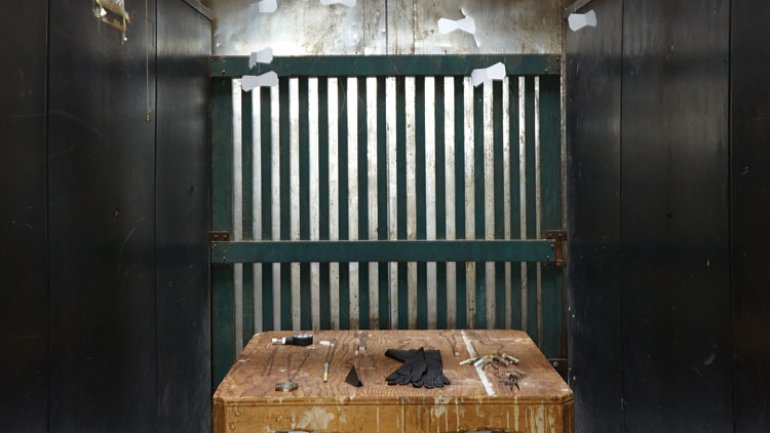Begin Again
Begin Again
The road to San Francisco begins in Iceland. At least it did for Amy Tavern. In mid-2013, Tavern was living in Skagaströnd, a village on Iceland’s northern coast. An accomplished metalsmith, she was instead focusing on a different medium – her embroidery. The piece that resulted, Island of 14,264 Days, is a nubby, knotted, evocative topography – an imaginary land mass that represents her life. It took her 200 meditative hours, using only one stitch, to create.
Tavern returned to the United States, but Island didn’t leave her mind. A few months later, on a plane ride, she was reflecting – and she found a name for the shift she felt.
“It was the work that told me that I am an artist,” Tavern says. “I literally never used that word to describe myself until I made that piece.” Island had shown her that she was interested in – and capable of – expressing herself in more ways than jewelry.
It would have been easier, maybe, to parlay that awareness into the jewelry career she’d already built. At 41, Tavern has been a full-time jeweler for a decade. She has a robust résumé of exhibitions, a successful production line. She is a sought-after instructor and familiar name in the field. And this fall, she will walk into California College of the Arts as a beginner again: an MFA student in sculpture, installation, and interdisciplinary art.
Tavern isn’t daunted – or maybe she is. “I’m having feelings that I had when I was at the beginning of my career,” she says. “You know, being completely scared, being totally freaked out.” But, she says (and this is a big “but”), “I kind of love that I’m feeling this way again. It’s like, OK: I can still feel that way. It’s very humbling. And then I say to myself: ‘You’re going to lean on all these years of experience.’ I know what to do.”
There’s no doubt she does. Tavern describes herself as a “sensitive observer,” a quality evident in her art jewelry, brimming with nuanced ideas about memory, identity, place, and perception. A 2014 installation at Velvet da Vinci gallery, In Between, explored the universal human experience of transition and what’s needed to navigate it. Tavern suspended 1,000 paper bows – a bloom of memories – in a two-story elevator shaft, over a table laid with nine necklaces embodying decision-making tools such as observation and logic. I Live Here Now, a series Tavern began in 2014, incorporates materials such as her mother’s wedding dress and stones from the foundation of her childhood home into an ongoing meditation on identity, place, and belonging. (Though she created Island before she formally began the series, Tavern quickly realized it belonged there, too.)
In the past several years, she’s also been working more with photography and video. Last year, she returned to Iceland for several months. Throughout May, the month she turned 40, she stood in the same spot every day, capturing an image of the ocean. Everywhere she travels, she’s also been recording two minutes of light reflecting on moving water, like some cosmic collector, quietly gathering up the material essence of what it’s like to be alive on Earth.
“I believe that anything is a material,” Tavern says, “from very traditional things, like metal, clay, or wood, to things that are intangible.”
She exercised her brand of sensitive perception as she decided where to study, seeking out a place that would be right for her, not only highly ranked or recommended. She knew the setting would be crucial. She considered programs in Iceland first, drawn to its wide-open, inspiring views. When she turned her attention to the United States, Tavern realized that California, with its vast deserts and expansive shorelines, evoked the same emotional response. “It gives my mind room,” she says. “It gives my spirit room. It gives my creativity room.”
Space, time, place: They’re the essential conditions for the work Tavern plans to develop in her next two years at CCA. “Up until now, I have always made work that goes on a pedestal – or that goes on the body,” she explains. Though she doesn’t imagine ever leaving metalsmithing behind (“I will always love jewelry; I will always make it”), she is shifting her focus to work that surrounds the body, creating spaces that immerse people. Human experience and perception, unique to each of us and thus also universal, will continue to be her language.
“It’s like I’ve been doing all this homework, all this research, for the past 10-plus years – and now it’s like, OK. I need to stop, and I need to focus. It feels like I’m ripe for this moment right now,” Tavern says.
“I can feel it in my bones: This is exactly what I’m supposed to be doing.”
Julie K. Hanus is American Craft’s senior editor.

